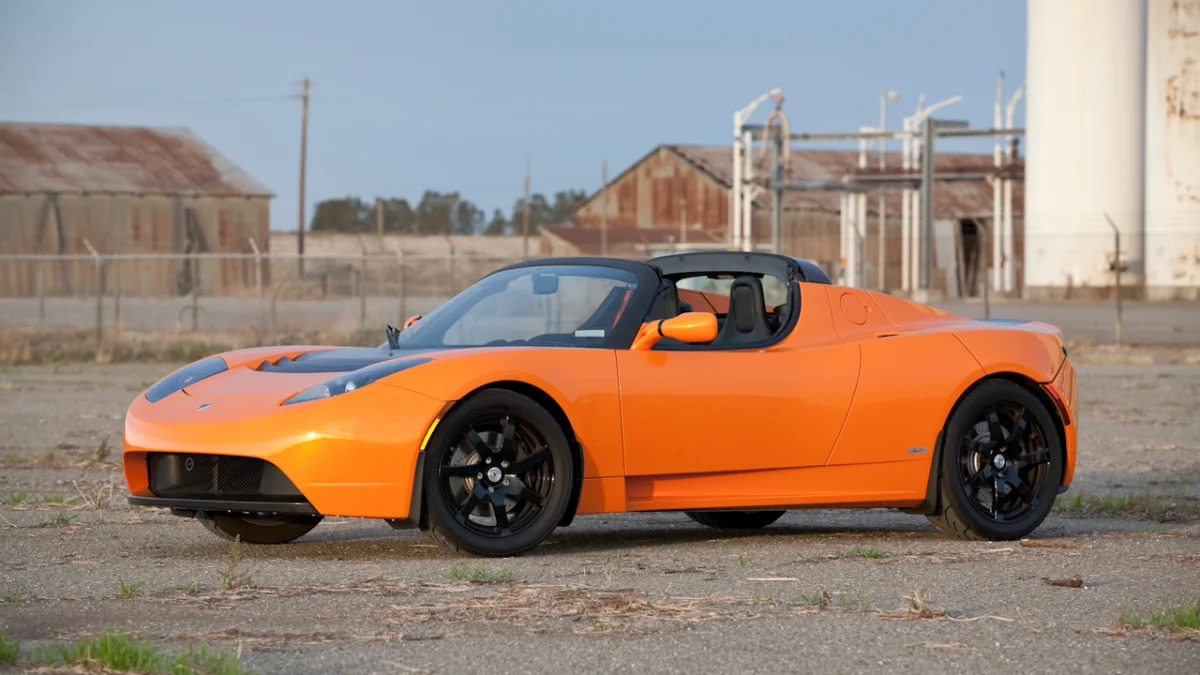Using a word taken from the computer world, to "brick" an EV means to make your electronic device inoperable. In the case of an EV, it would mean to run the battery state of charge so far down that nothing works anymore, thus requiring an expensive flatbed tow and an even more expensive battery pack – about $40,000 in a Tesla Roadster.
This is the charge of Michael Degusta, who wrote a detailed post on the matter in which he claims there have been five cases of Roadsters being bricked that he knows about. Since this is the first we've heard about it (and we imagine all those Silicon Valley Roadster owners know a thing or two about Internet communication), we're surprised we didn't hear about this before the alleged problem claimed five non-working cars. Thus, we figure there's more to the story, especially since some people are already poking holes in some of Degusta's statements. We've emailed Degusta and asked him to provide further proof of and details about these bricked cars, but he has not responded yet.
For its part, Tesla has offered AutoblogGreen a fairly noncommittal statement on the matter:
It's also true that all vehicles will require some attention if they sit unused too long, and people know what happens if you leave your laptop unplugged for two weeks. In the owner's manual for the Roadster 2.0/Roadster Sport, Tesla does say that "Over-discharge can permanently damage the Battery" and that "If storing for more than 15 days, it is strongly recommended that you keep it plugged in" (see the full section on "Leaving the vehicle unplugged" after the jump, or download the manual in PDF here), but it doesn't specify what sort of damage that is, or how expensive it might be to fix it. Tesla spokesman Ricardo Reyes did tell AutoblogGreen that he is working to demystify the situation and will get back to us with more information.All automobiles require some level of owner care. For example, combustion vehicles require regular oil changes or the engine will be destroyed. Electric vehicles should be plugged in and charging when not in use for maximum performance. All batteries are subject to damage if the charge is kept at zero for long periods of time. However, Tesla avoids this problem in virtually all instances with numerous counter-measures. Tesla batteries can remain unplugged for weeks (even months), without reaching zero state of charge. Owners of Roadster 2.0 and all subsequent Tesla products can request that their vehicle alert Tesla if SOC falls to a low level. All Tesla vehicles emit various visual and audible warnings if the battery pack falls below 5 percent SOC. Tesla provides extensive maintenance recommendations as part of the customer experience.
If for some reason, you are unable to keep the vehicle plugged in when it is not being used, it is up to you to preserve battery life by paying attention to the charge level and the temperature (see bulleted list below). If leaving your vehicle unplugged for more than 24 hours, follow these do's and don'ts to avoid prematurely decreasing the life of your vehicle's Battery:
• DO leave the vehicle plugged in whenever possible.
• DO maintain at least a15% charge level in the Battery if leaving it unplugged for more than 48 hours.
• DO charge the Battery to a full charge before leaving it unplugged. This maintains the charge level needed to keep the Battery's electronics operational. If storing for more than 15 days, it is strongly recommended that you keep it plugged in.
• DO NOT expose an unplugged vehicle to ambient temperatures below -20°F (-29°C) or above 120°F (49°C.










Sign in to post
Please sign in to leave a comment.
Continue